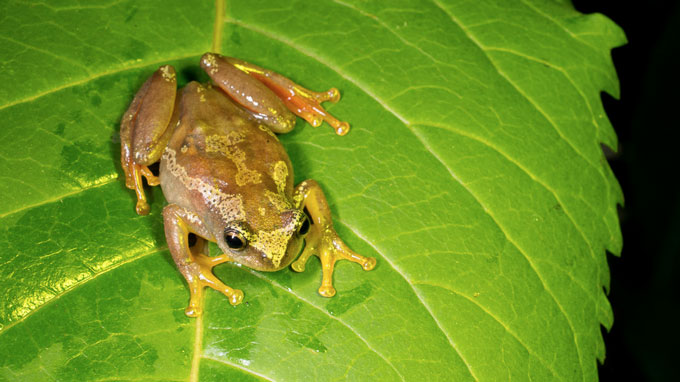A newfound species of frog doesn’t ribbit. In fact, it doesn’t make any sound at all.
Many frogs have unusual characteristics, from turning translucent to being clumsy jumpers (SN: 12/22/22; 6/15/22). The recently discovered amphibian lacks a voice. It joins a group of seven other voiceless frog species called spiny-throated reed frogs that reside in East Africa.
Instead of croaking, the spines on male frogs’ throats might help their female counterparts recognize potential mates via touch, sort of like braille, says conservation biologist Lucinda Lawson of the University of Cincinnati.
Science News headlines, in your inbox
Headlines and summaries of the latest Science News articles, delivered to your email inbox every Thursday.
Client key* E-mail Address* Sign up
Thank you for signing up!
There was a problem signing you up.
Lawson and colleagues spotted the little frog, only about 25 millimeters long, in 2019 while surveying wildlife in Tanzania’s Ukaguru Mountains. The team immediately recognized the animal, now named Hyperolius ukaguruensis, as a spiny-throated reed frog. But something seemed off.
“It [was] the wrong color,” Lawson says. Most frogs from this group are green and silver, but this one was gold and brown. Some quick measurements to check if the peculiar frog simply had trivial color variations or if it could be a new species revealed that its eyes were smaller than other spiny-throated reed frogs. The researchers agreed: “Let’s do some genetics,” Lawson says.
They ran DNA tests on two frogs that looked like they belonged to the suspected new species, as well as 10 individuals belonging to known spiny-throated species. Comparing the golden frogs’ genetic makeup with that of the others revealed the oddballs were genetically distinct, Lawson and colleagues report February 2 in PLOS ONE.
 The golden-hued Hyperolius ukaguruensis stands out from its fellow spiny-throated reed frogs, which also lack a voice but are typically green.Christoph Liedtke
The golden-hued Hyperolius ukaguruensis stands out from its fellow spiny-throated reed frogs, which also lack a voice but are typically green.Christoph Liedtke
Each frog species in this voiceless group — including H. ukaguruensis — lives in its own isolated domain of forest. All seven of the previously known species are endangered or vulnerable. This seclusion makes it vital to distinguish species and get them added to the conservation priority list, Lawson says. Then, governments and organizations can begin protecting the region that the new, potentially endangered animal calls home.

